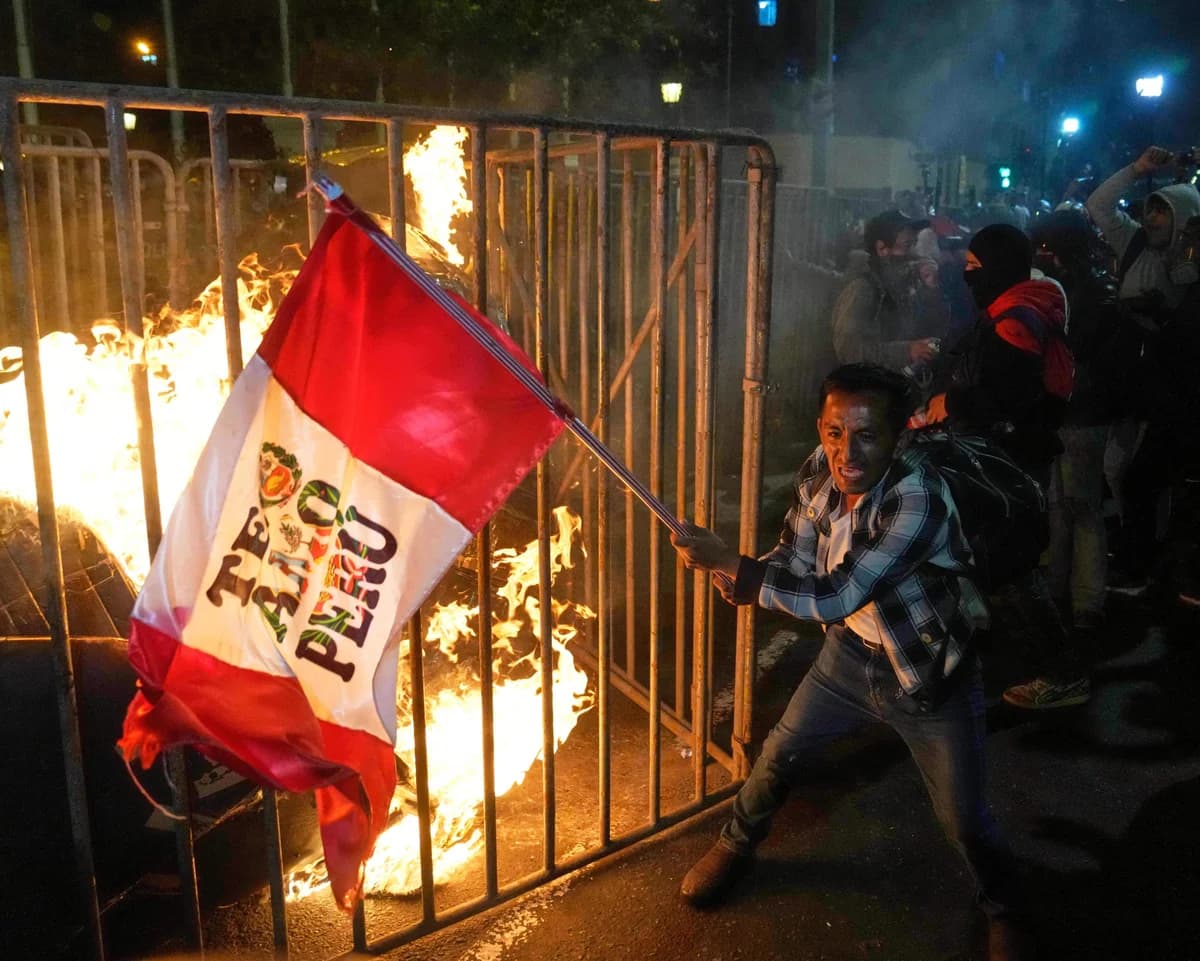Loading News Article...
We're loading the full news article for you. This includes the article content, images, author information, and related articles.
We're loading the full news article for you. This includes the article content, images, author information, and related articles.
Peru is set to declare a state of emergency following widespread protests against newly installed President José Jerí, which have resulted in at least one fatality and numerous injuries.

Peru's government is poised to declare a state of emergency in Lima, the capital, following a wave of protests against President José Jerí, who assumed office just days ago. The demonstrations, fueled by public anger over corruption and a rising crime crisis, led to clashes with police, resulting in the death of one demonstrator and injuries to dozens of police officers.
Prime Minister Ernesto Alvarez announced late on Thursday, October 16, 2025, that the state of emergency would be declared within hours, alongside a package of measures aimed at tackling insecurity.
The recent protests, which saw thousands gather across the country, including hundreds clashing with police outside the congress building in Lima, are the latest in a series of demonstrations against corruption and escalating crime. This unrest follows the dramatic ouster of former President Dina Boluarte last Thursday, October 9, 2025, amidst similar public discontent.
Protesters, including Gen Z activists, transport workers, and civil groups, chanted slogans like “Everyone must go!” as they attempted to breach metal barriers protecting the congress building. Police responded with teargas, while some demonstrators hurled fireworks, rocks, and burning objects.
Eduardo Mauricio Ruiz, a 32-year-old man, was killed during the protests. Fernando Losada, a representative from Peru’s ombudsman’s office, confirmed Ruiz's death and stated it would be investigated. The prosecutor’s office later confirmed Ruiz died after being shot.
President Jerí expressed regret over Ruiz’s death on X (formerly Twitter), pledging an “objective” investigation. He attributed the violence to “delinquents who infiltrated a peaceful demonstration to sow chaos.”
The declaration of a state of emergency grants the government extraordinary powers, potentially limiting civil liberties in the affected areas. While intended to restore order, such measures can sometimes escalate tensions if not managed carefully. The ongoing instability in Peru underscores the fragility of governance in the face of widespread public dissatisfaction, a scenario not unfamiliar in various developing democracies, including Kenya, where public trust in institutions is often a critical factor.
The full extent of the infiltration by “delinquents” as alleged by President Jerí remains to be independently verified. The specific circumstances surrounding Eduardo Mauricio Ruiz's death, particularly who fired the fatal shot, will be a key focus of the ongoing investigation by Peru's prosecutor's office.
Observers will be closely watching the implementation of the state of emergency and the government's proposed measures to tackle insecurity. The investigation into Ruiz's death and the broader response to public grievances will be crucial in determining the trajectory of political stability in Peru. The situation serves as a reminder of the delicate balance between maintaining order and upholding democratic freedoms, a challenge that resonates globally.
Keep the conversation in one place—threads here stay linked to the story and in the forums.
Other hot threads
E-sports and Gaming Community in Kenya
Active 6 months ago
Popular Recreational Activities Across Counties
Active 6 months ago
The Role of Technology in Modern Agriculture (AgriTech)
Active 6 months ago
Investing in Youth Sports Development Programs
Active 6 months ago